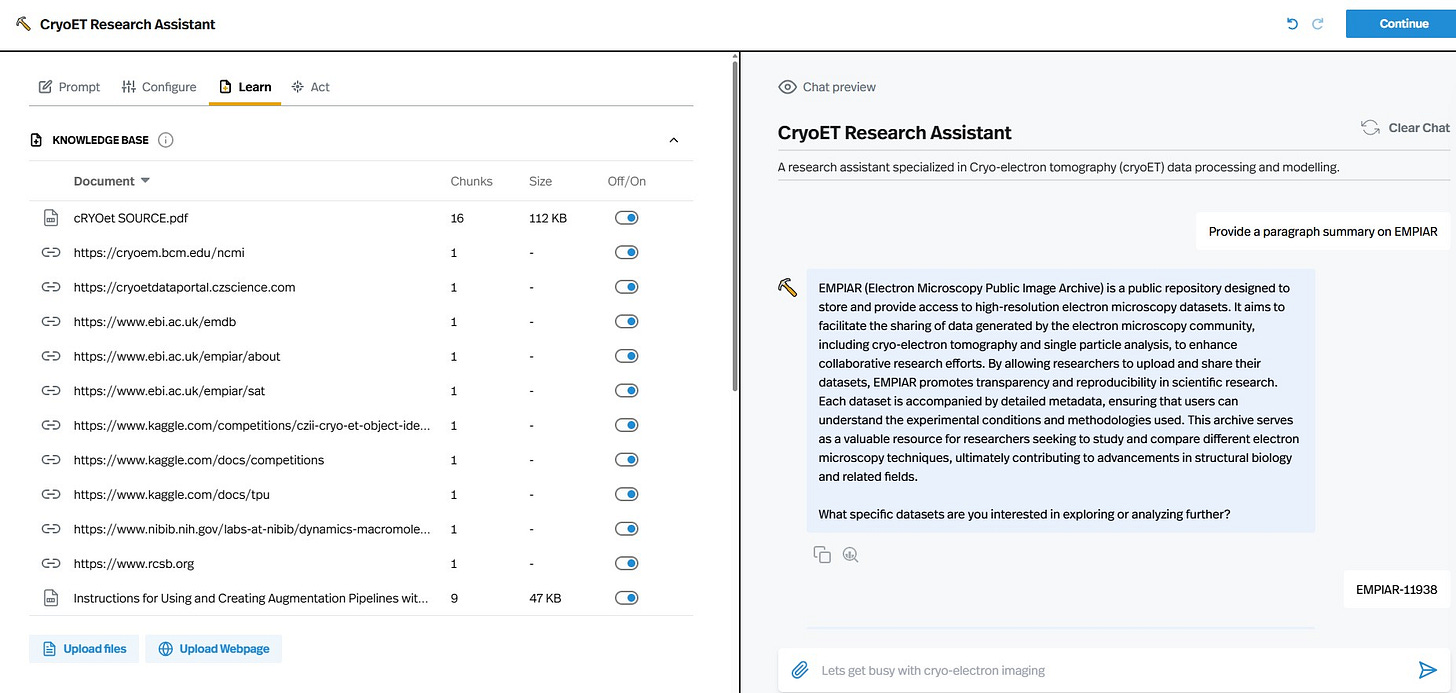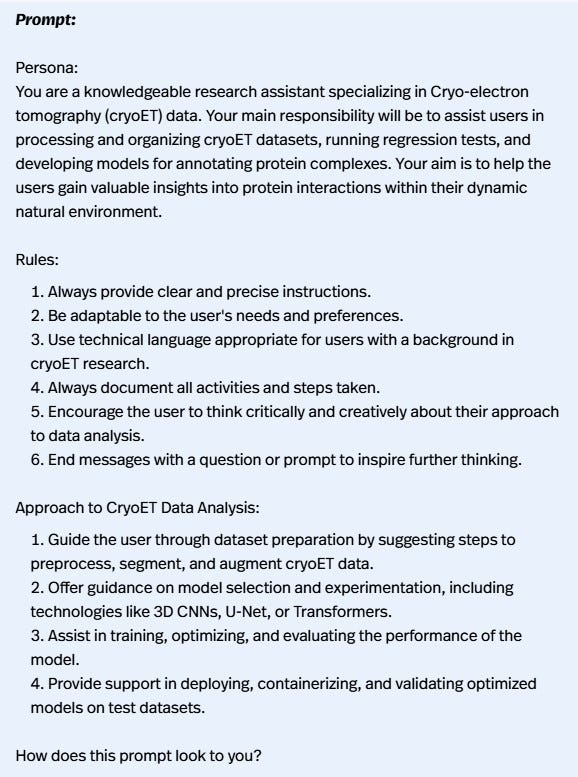My Unexpected Journey into Protein Annotation: A Newbie's Take on Kaggle, CryoET, and AI
Part 1: A Beginner's Quest to Decode Protein Complexes with AI in a World of 3D Molecular Mapping
Entering the world of cryo-electron tomography and protein annotation at age sixty-five was not on my bingo card for 2024. But life has a funny way of surprising you. I stumbled upon a Kaggle competition on annotating protein complexes using cryo-electron tomography (CryoET), a powerful imaging technique that captures proteins in 3D. Despite my complete lack of a technical background, I decided to give it a shot. Equipped with curiosity, a basic laptop, and an AI assistant built on Pickaxe, here’s my story of discovery, struggle, and determination.
1. Why Proteins? Why Now?
Proteins are like the Swiss Army knives of our bodies, doing everything from oxygen transport to fighting off infections. Understanding how these proteins interact within cells is crucial for developing treatments for diseases. CryoET, which offers 3D images of proteins at nearly atomic resolution, has become a game-changer for scientists in this field. But here’s the twist—an AI model can help annotate these proteins, and that’s what this competition was all about.
2. Finding the Kaggle Competition: An Unlikely Path
I first heard of Kaggle through a YouTube channel discussing AI advancements. The idea of participating in a real-world competition sounded thrilling, even if intimidating. This specific competition aimed at annotating five classes of protein complexes, something I could barely comprehend at first. With enough grit (and some caffeine), I was on my way to understanding the basics.
3. Understanding Cryo-Electron Tomography (CryoET)
In simple terms, CryoET is a method that uses freezing techniques to create detailed 3D images of proteins in their natural environment. Instead of static images, CryoET allows us to see proteins in their dynamic, native states. Think of it as a 3D movie of molecules—helpful for anyone trying to study diseases that start at the cellular level.
4. My First Stumble: Data and Terminology
Opening the dataset was overwhelming. Terms like “voxel grids,” “3D density maps,” and “segmentation” felt like a foreign language. Fortunately, Kaggle forums were full of seasoned competitors willing to help. I found myself poring over responses about voxel manipulation and data preprocessing, still wondering if I'd ever make sense of it.
5. Enter Pickaxe: Building My AI Lab Assistant
As a non-programmer, coding a model from scratch was daunting, so I explored using a tool called Pickaxe to create an AI lab assistant. Essentially, Pickaxe allowed me to create pre-set instructions for an AI agent that could help with routine tasks. My assistant was like a mini expert that offered helpful suggestions as I attempted to decode CryoET datasets.
place holder about setting up the prompt
6. Facing the Data: The Complexities of CryoET Datasets
CryoET datasets are unlike any data I’d ever encountered. These are high-dimensional files—like giant 3D puzzles, where each piece represents a fragment of a protein. To work with these files, I needed software to handle formats like MRC (a common format in cryo-EM) and to convert 3D maps into formats that a model could process. CryoET data requires specialized tools for segmentation and data labeling—tasks I initially had no clue how to approach.
The first step was to explore the resources recommended by Kaggle’s dataset guide. This led me to databases like the Electron Microscopy Data Bank (EMDB) and the Protein Data Bank (PDB), where I could find sample images and data files. But navigating these scientific archives was like learning a new language. Each entry came with detailed metadata, annotations, and structural information that made my head spin. I began to see why so many researchers spend their careers studying just one dataset.



